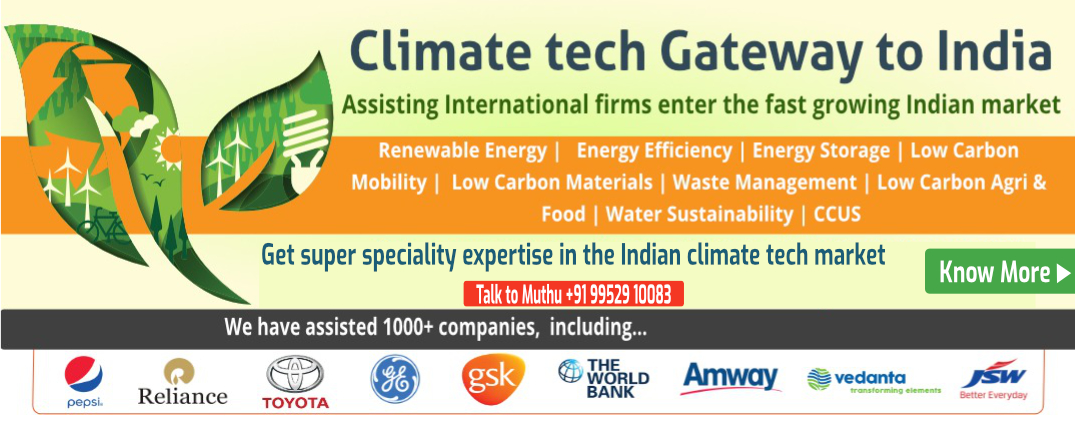This post is a part of Climate G2I Intelligence series from Energy Alternatives India (EAI), India’s leading climate-tech consulting firm.
G2I stands for Gateway 2 India, and provides comprehensive market intelligence and go-to market assistance for International firms entering the Indian climate-tech market. More about Climate G2I from here
Hitachi Energy, a global technology leader with a legacy of pioneering innovation in the power grid sector recently unveiled its biggest global technology and innovation center in Chennai, India. Spanning an impressive 300,000 square feet, the facility is set to house over 2,500 technologists, making it a significant hub for research and development.
The center’s primary focus will be on transformers and grid automation, aiming to deliver advancements in these crucial areas. It’s also designed to operate with self-sufficiency, supporting businesses across various segments. This investment underscores Hitachi Energy’s commitment to the Indian market and its recognition of Chennai’s skilled workforce and Tamil Nadu’s ambitious economic growth targets.
Chennai’s selection as the location for this center wasn’t random. The city boasts a highly skilled and talented workforce, a crucial factor for Hitachi Energy’s endeavors. Additionally, Tamil Nadu, the state where Chennai is situated, has set an ambitious goal of becoming a trillion-dollar economy by 2030. This growth trajectory aligns perfectly with Hitachi Energy’s vision for the future.
Net Zero by Narsi
Insights and interactions on climate action by Narasimhan Santhanam, Director - EAI
View full playlistIndia’s power transmission and distribution (T&D) market alone was valued at USD 23.6 billion in 2022 and is projected to reach USD 40.4 billion by 2027, a CAGR of 10.6%. This growth necessitates partnerships between Indian entities and global players like Hitachi Energy to foster innovation and knowledge transfer. As a consulting firm, Energy Alternatives India understands these dynamics and can assist your organization in identifying suitable alliances and navigating emerging opportunities.
While the Indian power grid sector offers significant potential, stakeholders must address challenges, including aging infrastructure, the need for smart grid technologies, and the financial health of distribution companies (DISCOMs). Indigenization is another crucial aspect, with the government’s “Make in India” initiative promoting the domestic manufacturing of power grid equipment.
Several government policies and drivers support the sector’s growth. The National Electricity Policy 2021, Ministry of Power’s modernization plans, and empowered State Electricity Regulatory Commissions (SERCs) provide a favorable regulatory environment. Furthermore, India’s commitment to a clean energy transition and the increasing share of renewables in the power mix necessitate a more flexible and responsive grid.
Key takeaways:
India’s power grid is undergoing a significant transformation, driven by factors like increasing demand, ambitious renewable energy goals, and government push for modernization. This presents a lucrative opportunity for international companies with expertise in grid technologies.
This post is a part of Climate G2I Intelligence series from Energy Alternatives India (EAI), India’s leading climate-tech consulting firm.
G2I stands for Gateway 2 India, and provides comprehensive market intelligence and go-to market assistance for International firms entering the Indian climate-tech market. More about Climate G2I from here






 Our specialty focus areas include
Our specialty focus areas include




